A Caveat Protein Level in the Food
The most important variable when choosing a fish food is the protein level. The higher the protein level in any food the healthier the fish. But this effect is NOT because eating high protein food is good for a fish. Rather the effect is due to what high protein food can do to the ecosystem that is in any aquarium. Higher protein food is a significant factor in creating crystal clear water. In turn, crystal clear water gives very healthy fish.
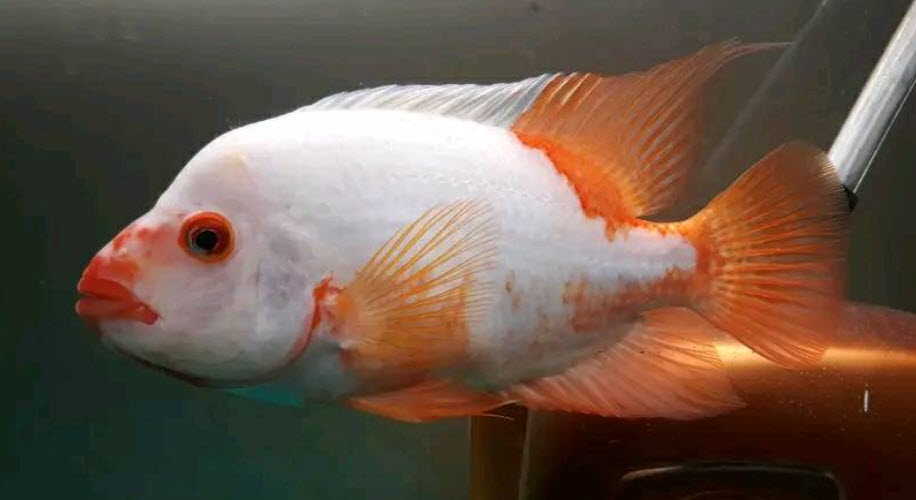
Low protein food does not directly produce unhealthy fish. Rather its effect is indirect, through a long line of causal effects:
- A low protein food has a high carbohydrate content
- Carbohydrates are only 50% digested by the fish
- The undigested carbohydrates create dissolved organic compounds (DOCs) that have a high carbon to nitrogen ratio
- Pathogenic bacteria and other pathogenic organisms proliferate with high carbon to nitrogen ratio DOCs
- The proliferation of these organisms in the water column results in “dull” or even slightly milky water
- These pathogenic bacteria and other organisms in the water column attack the fish
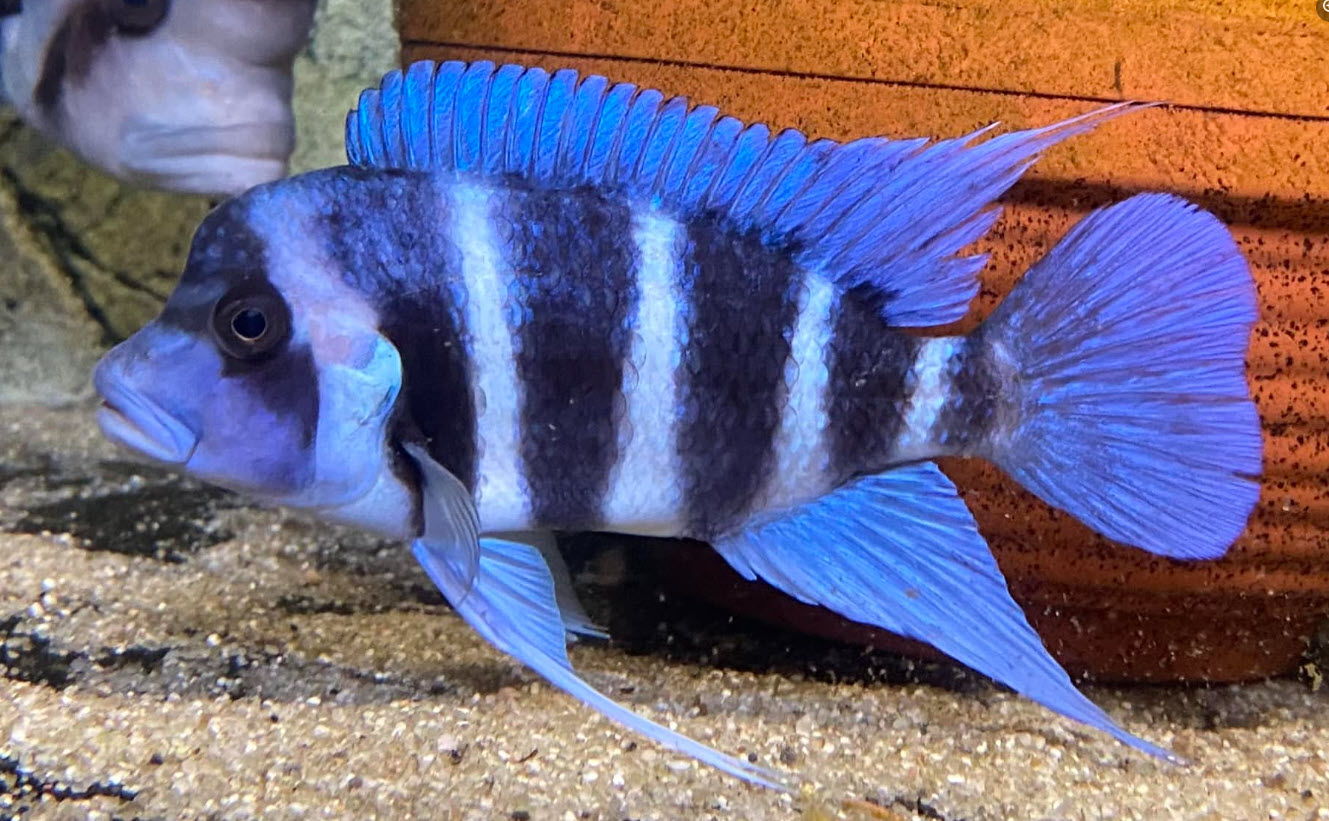
Now everyone wants to know what defines a low protein food. I make the cut-off at 45% for dry commercial fish food. But the “45% protein” level is completely arbitrary. In truth there is a continuum between 30% and 60%. A level of 42% protein in the dry commercial fish food won’t be “ideal” but it also won’t be that bad. The key is the clarity of the water. Is the 42% protein food giving crystal clear water? Or is it giving “dull” water or even slightly cloudy water. There is a “threshold” here.
But where the threshold will be is very dependent on a multitude of variables. For instance, 34% might give crystal clear water in one aquarium setup while 52% might give “dull” water in another aquarium setup. Note that if I must buy commercial fish food, I ALWAYS buy the highest protein level I can find.
Below I will discuss those food variables that directly affect the fish. This is with the clear understanding that all these effects are minor compared to the effect of the protein level on the health of the fish via the creation of a pathogen filled water column.
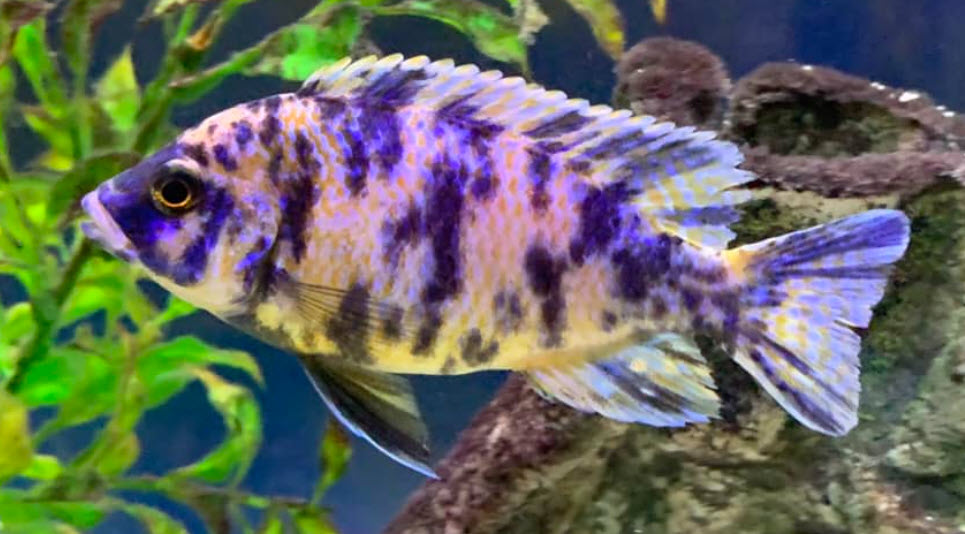
Fish Food Science
There are many different “beliefs” about food and its impact on health, both for fish and humans. The simple fact is that virtually all these beliefs have no basis in science, they are simply unsupported beliefs.
This article reviewed many research books on fish nutrition:
- “Fish Nutrition and Feed Technology”, Garg, 2018
- “Tilapias, Biology and Exploitation”, K. Jauncy 2000
- “Principles of Fish Nutrition”, W. Steffens 1989
- “Practical Manual on Fish Nutrition and Feed Technology”, Jain, 2018
- “Nutrient Requirements of Warmwater Fishes”, Wittwer, et. al. 1977
- “Fish Nutrition”, John Halver 1972
- “Fish Nutrition and Feed Technology: A Teaching Manual”, Felix, 2012
- “Introduction to the General Principles of Aquaculture”, Ackefors et. al. 1994
- “The Biology of Fish Growth”, Weatherly, Gill 1987
- “Environmental Biology of Fishes”, Jobling 1999
- “The Physiology of Fishes”, Evans, Claiborne 2006
- “The Physiology of Tropical Fishes”, Val, et. al. 2006
- “Nutrition & Feeding of Fishes”, Raghunath, 2012
These thirteen books all referenced thousands of various research papers. They found only very slight differences in fish health from three variables: protein level, fat level, and the level of cheap vegetable protein.
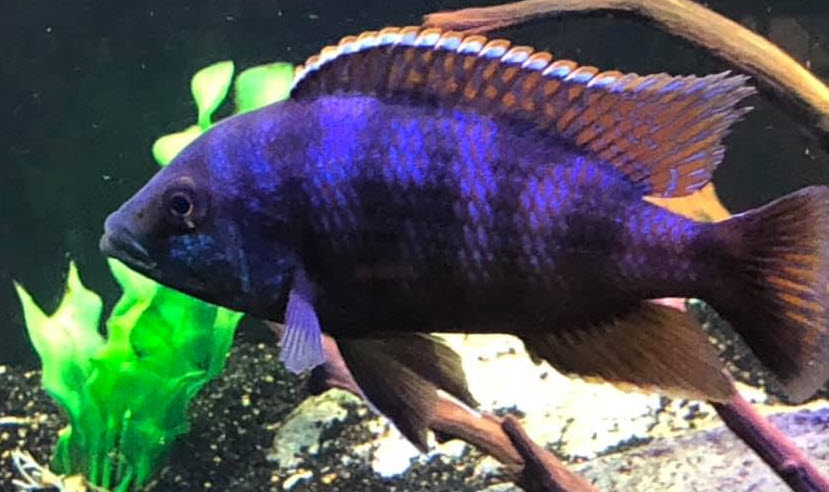
Protein Levels
All these extensive references said that the growth rate of juvenile fish is generally negatively impacted when protein levels in the feed dropped below 40%. The juvenile growth rates of some fish which are carnivores were slowed slightly when fed only 40% to 50% protein. But no research showed that protein levels had any impact on fish health, survival rate, or longevity.
Fat (lipids) Levels
Optimum fecundity (reproduction) occurred when the levels of fat exceeded 10%, but again no significant difference was seen in fish health or survival rates for most fish. Discus and tilapia do appear to need 12% to 17% fat for maximum growth rate during the juvenile stage but no increase in mortality was seen with lower rates of fat.
Cheap Vegetable Protein Levels
Several references found that fish food which has more than 30% vegetable protein in it isn’t the “best” food for juvenile fish. This is because cheap vegetable protein like soybean meal is what is in most “veggie” fish foods. Vegetable proteins like soybeans lack two essential amino acids that ALL fish need. But these veggie food are not “bad” for fish, just not optimum. There was one study that showed a small statistically insignificant increase in mortality rate with adult discus. Based on this one study we are defining a few fish foods as having a “slight negative effect on any fish”
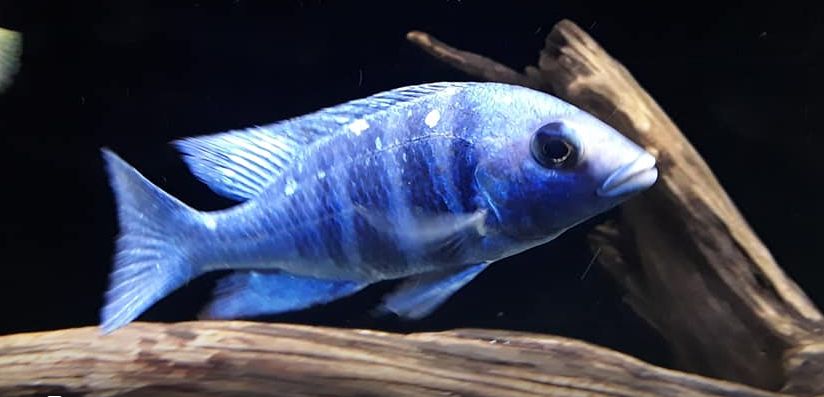
Research on Protein and Fat Levels
There is research supporting what the above books found in aquaculture as holding the keeping of tropical fish.
Nutritional studies for aquarium fishes like the neon tetra Paracheirodon innesi are sparse in comparison with those for food fish. To determine the optimum dietary protein level and source for the growth of neon tetras, diets were formulated to contain 25, 35, 45, and 55% dietary protein from either animal protein (marine) or plant protein sources in a 432 factorial treatment design. Neon tetras (initial weight, approximately 0.12 g) were reared in 5-L fiberglass tanks (25 fish/tank, 3 tanks/diet) in a freshwater recirculating system. Fish were hand-fed the experimental diets three times per day for 12 weeks. The average weight gain of neon tetras fed diets with animal protein sources was significantly higher than that for fish-fed diets based on plant proteins. Fish-fed diets containing 45% or 55% crude protein had significantly greater weight gain than did fish-fed 25% crude protein from either protein source. Survival ranged from 71% to 84% and was not significantly altered by dietary protein source or level.
“Dietary Protein Source and Level Affect Growth in Neon Tetras”, W. Sealy et. al. 2009:
This is a graph of the results of their testing:
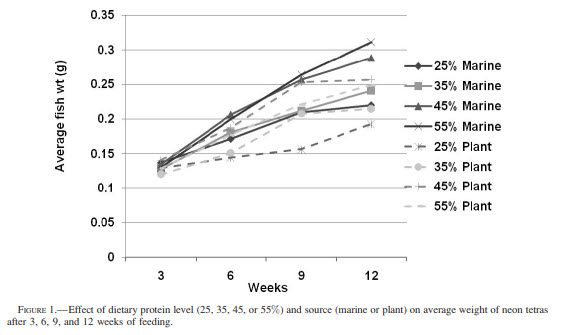
It should be noted that the feed protein was either 100% animal (“marine”, i.e. fishmeal) in origin or 100% vegetable (“plant”, i.e. soybeans) in origin. What is somewhat interesting here is that 100% vegetable protein did not affect the survival rate of the neons.
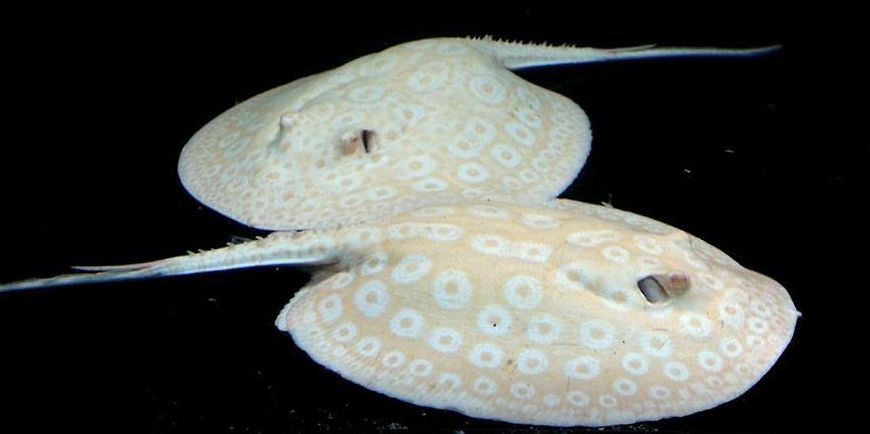
The effect of various diets on fecundity was tested on swordtails:
We conducted a study to determine the effect of dietary protein and lipid levels on the growth and reproductive performance of a freshwater ornamental species, the swordtail (Xiphophorus helleri). Two protein levels (20% and 30%) with four lipid levels (8%,12%,16%, 20%) within each protein levels were tested. Results showed that dietary protein level significantly influenced overall weight, weight gain, and specific growth rate, while dietary lipid did not influence any of these growth parameters. More specifically, increasing protein levels from 20% to 30% gave almost a 42% increase in the final weight of the test groups. Dietary protein levels positively influenced gonadosomatic and hepatosomatic indexes. Both dietary protein and lipid significantly influenced female muscle protein content. Significantly highest fry production was obtained from diets 30 protein – 12 lipid and 30 protein – 16 lipid, respectively, while diet 20 protein – 8 lipids resulted in the lowest fry production. This present study indicates the dietary protein and lipid requirements for female swordtails for optimized growth and reproductive performances to be at 30% and 12% respectively.
“Effect of Varying Dietary Lipid and Protein Levels on Growth and Reproductive Performance of Female Swordtails Xiphophorus helleri (Poeciliidae)”, S. Ling et. al., 2007:
This study confirmed that a high-fat level is particularly good for breeding fish. It also confirmed that a higher protein level gave faster growth in juvenile fish. It did not show any increase in mortality with lower protein or fat levels.
This study was limited by the fact they did not test over 30% in protein level. It was interesting that over 12% fat (lipid) did not increase fecundity, it insignificantly decreased it for both protein levels. Here is the chart from this study on fertility:
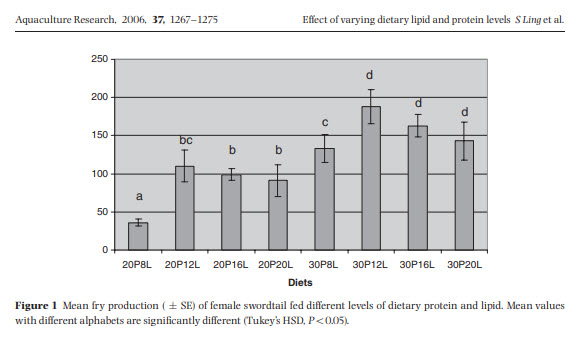
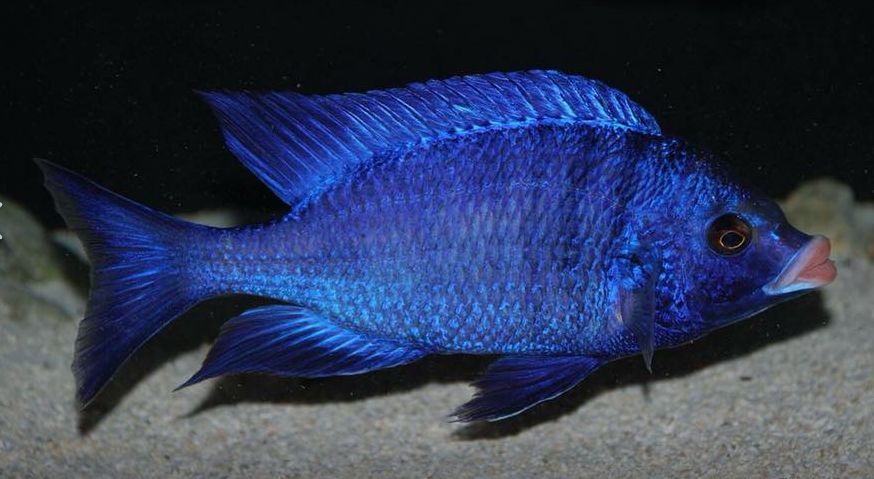
Another study was done on guppies:
Three feeds used in the guppy (Poecilia reticulata) farming in south Asia were evaluated for their effects on the growth and reproductive performance of females. Feeds namely diet – 1, 2 and 3 contained 18%, 29% and 44% protein and 4%, 5% and 10% lipids respectively. The growth and reproductive performance were evaluated based on growth parameters, gonadal development, and fry production. Fish-fed diet-3 had a significantly (p<0.05) higher specific growth rate compared to the other two groups. The ovary weight and ovary volume of guppy fed with diet-3 were also significantly (p<0.05) higher than those with diets 1 and 2. The absolute fecundity values were 4.28±1.61, 7.98±1.89, and 18.44±2.07 respectively for the fish-fed diet-1, diet-2, and diet-3. The number of fry produced and their survival was also significantly (p<0.05) higher in fishes fed diet-3.
“Growth and Reproductive Performance of Female Guppy (Poecilia reticulata) Fed Diets with Different Nutrient Levels”, H. Kithsiri et. al. 2010:
This study has the shortcoming that feeds of higher than 40% protein and 10% fat were not studied. But the trend is clear. Higher protein and high fat give better fertility. The significant point in this study is that the survival of the fry was impacted by the low protein and fat levels. Unfortunately, the levels were not crossed so we do not know whether that was because the fry’s parents had more protein or whether it was due to more fat.
Here is the data on fry production and mortality. The higher protein and fat levels had significantly higher fry production rates and slightly higher juvenile survival rates during the breeding period.
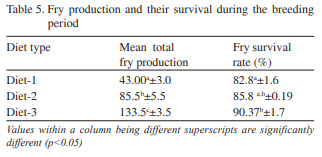
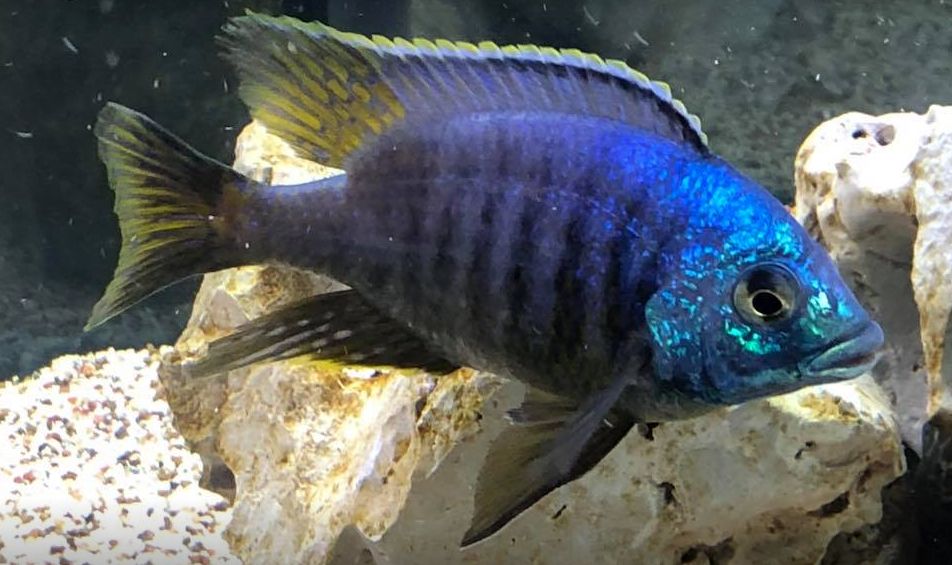
Another study looked at the feeding of juvenile discus.
A feeding experiment was conducted to evaluate the effect of different dietary fat levels on growth performance and digestibility in discus Symphysodon aequifasciata juveniles weighing 8-10 g. The juveniles were stocked into 15 plastic tanks each 54cm×40cm×28cm and fed isonitrogenous semi-purified diets containing 45.0% protein with fish meal, and soybean meal as protein sources, and lipid levels of 10.21%, 12.02%, 17.17%, 21.0%, and 22.14% with soybean oil as lipid sources for 90 days at a water temperature of 29.0±1.0℃. During the experiment, survival ranged from 96.67% to 100.0% without significant difference (P 0.05). The specific growth rate (SGR), protein efficiency ratio (PER), and relative weight gain (RWG) increased first and then decreased as the dietary fat levels increased. The juveniles fed the diets containing 12.02% fat had very significantly higher SGR, PER, and RWG than the fish fed the dietary fat levels of 10.22% and 22.14% (P0.001). There were no significant differences in SGR, PER, and RWG in the juveniles fed the diets containing 17.17% and 21.05% compared with the fish fed the dietary fat levels of 12.02% fat (P 0.05). The maximal protein digestibility was observed in the juveniles fed the diets containing 12.02% fat and there were no significant differences in protein digestibility in the fish fed the dietary fat levels of 10.22%, 12.02%, and 17.17% (P0.05), indicating the optimal dietary fat ranged from 12.02% to 17.17% for discus juveniles.
“The Effect of Dietary Fat Levels on Growth and Digestibility in Juvenile Discus Symphysodon aequifasciata”, J. Wang et.al. 2009:
This study says that the optimal fat levels for the fastest growth of juvenile discus are 12% to 17%. This is supported by the fact that juvenile tilapia in aquaculture are fed food with 15% fat in it for the fastest growth. There was no difference in any of the groups concerning mortality.
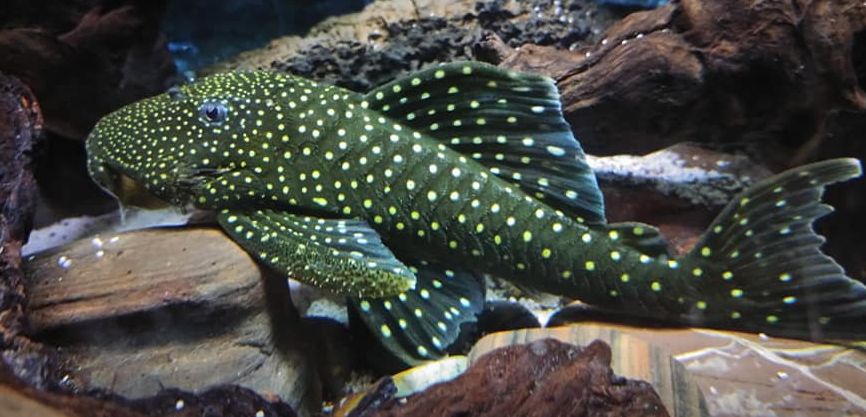
Research on Cheap Vegetable Protein
As for using a cheap protein source that is vegetable in origin, such as soybean meal, there is a significant study that was done on discus: “Assessment of Soybean Meal in Diets for Discus (Symphysodon aequifasciata) Farming Through a Fishmeal Replacement Study”, A. Chong, 2003. This 12-week study showed that juvenile discus fed 50% vegetable protein had a 70% lower growth rate.
Possibly even more important is that mortality appeared to be 6% greater over the 12 weeks in the discus fed greater than 30% vegetable protein. But this data was not found to be significant at the p<5% level. Still, based on this one study, we are defining a few fish foods as having a “slight negative effect on any fish” This is the data from the study:
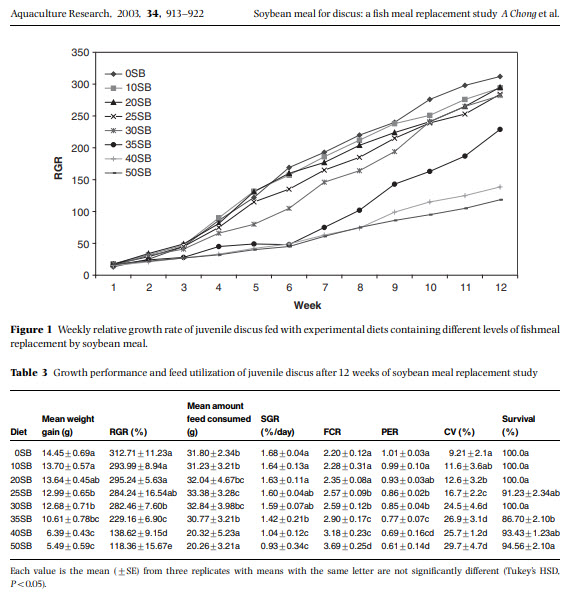
This dietary restriction is because soybean protein does not have the amino acids methionine and lysine. Potato protein and wheat gluten protein have the same problem. Virtually 99% of the vegetable protein in fish food is this type of protein simply because it is cheap. Some green vegetables such as spinach or spirulina have the amino acids methionine and lysine but they are expensive so aren’t put into fish food in significant quantities.
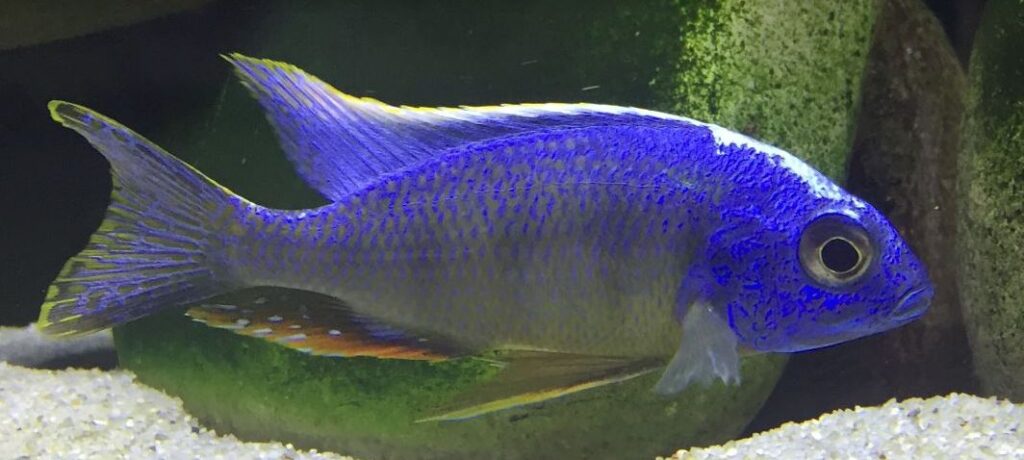
Note that the discus is NOT a carnivore, it is an omnivore per Crampton.
This paper reports an autoecological study of the western Amazonian discus S. haraldi (until recently classified as S. aequifasciatus). This species feeds predominantly on algal periphyton, fine organic detritus, plant matter, and small aquatic invertebrates.
“Ecology and Life History of an Amazon Floodplain Cichlid: the Discus Fish Symphysodon (Perciformes: Cichlidae)”, W. Crampton, 2008:
This is supported by the obvious periphyton grazing characteristics of the discus, the small mouth, and the constant picking it exhibits on the plants and ornaments the discus may share an aquarium with. This apparent contrast in data can be explained by the fact that most of the vegetable matter in periphyton is a bacterium, namely the cyanobacteria like spirulina. Cyanobacteria have significant quantities of methionine and lysine. Soybean meal does not have these two amino acids.
Note that the study above (“Dietary Protein Source and Level Affects Growth in Neon Tetras”, W. Sealy et. al. 2009) in the protein levels discussion also showed much decreased juvenile growth with cheap vegetable protein. It showed no effect on mortality.
What this all means is that fish food that has more than 30% vegetable protein in it MAY not be the “best” food for ANY fish. This is because cheap vegetable protein like soybean meal is what is in some “veggie” fish foods. But these “veggie” foods are probably not “bad” for fish, just not optimum.
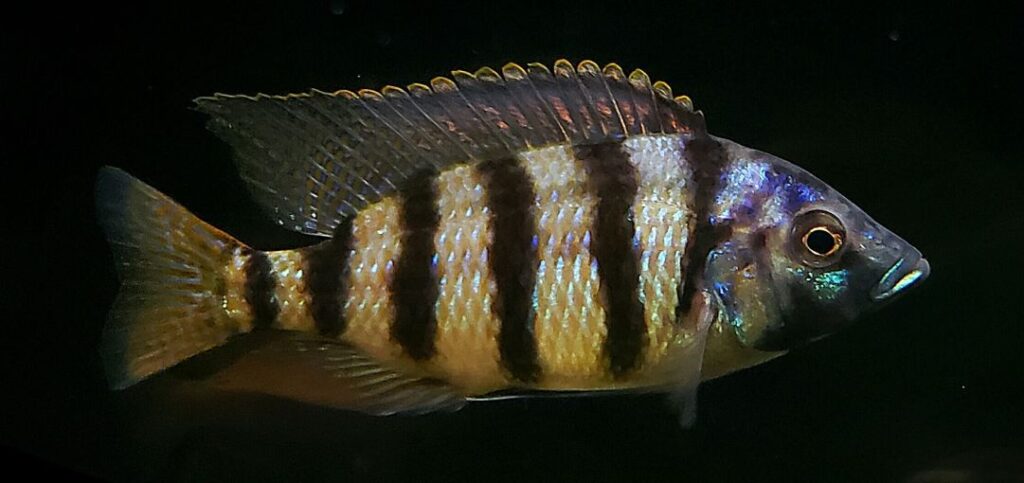
Research on Vitamin C
Vitamin C is unquestionably important to the health of fish. In nature almost all fish get sufficient vitamin C from eating some algae in their diet, either as direct periphyton “grazing” or as indirect absorption from eating fish that have eaten algae. In nature pretty much anything green has vitamin C in it.
Vitamin C (ascorbic acid) requirement of juvenile Oreochromis karongae was studied by incorporating varying levels ofascorbyl-2-polyphosphate in a 40% crude protein diet to obtain 0, 20, 40, 60, and 80 mg ascorbic acid equivalent kg-1diet. Juvenile fish of 3.7g ± 0.02g initial body weight were used for the study. After 84 days of the experiment, the fish fed vitamin C supplemented diets had significantly (P<0.05) higher specific growth rate protein conversion efficiency and protein efficiency ratio; and significantly (P<0.05) better feed conversion ratios than non-supplemented fish. Fish fed a non-supplemented diet recorded a 33 % rate of mortality, whereas those fed with a diet supplemented with 60 mg ascorbic acid kg-1 had mortality as low as 4.4 %. Hematological indices showed a significant increase (P<0.05) with dietary vitamin C level. Diet containing 60 mg kg-1 of vitamin C showed the maximum growth performance, while the broken line model gave 51mg ascorbic acid kg-1 diet as the optimal level required by juvenile O. karongae. Our data show that vitamin C is essential for O. karongae growth performance.
“Effect of Varying Levels of Dietary Vitamin C (ascorbic acid) on Growth, Survival, and Hematology of Juvenile Tilapia, Oreochromis karongae, Reared in Aquaria”, A. Nsonga, 2009:
But most fish food has significant vitamin C supplementation. And contrary to popular opinion, dry vitamin C in a fish dry fish food does not significantly decompose with time. So we do not think vitamin C or any other vitamin should be of concern to fish keepers.
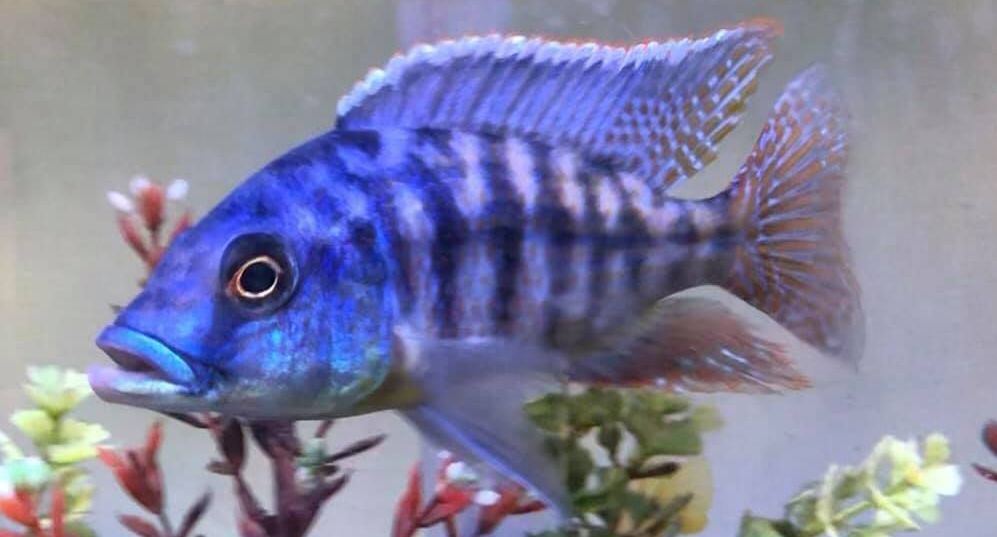
Research on Carbohydrates
Many studies say that carbohydrates are not an “efficient” source of calories for fish. But aquaculture farmers still use carbohydrates to feed their fish. The key here is the word “efficient”. Carbohydrates give a lower weight of food to the weight of the final fish product that does proteins, but carbohydrates do not affect the health of the fish. So carbohydrates aren’t detrimental to the fish.
So fish farmers calculate the cost-to-benefit ratio of replacing protein with carbohydrate. What they have come up with is that they feed fry roughly 55% protein, 15% fat, juveniles roughly 48% protein, 10% fat, and sub-adults roughly 42% protein, 5% fat, avoiding over 30% cheap vegetable protein. This gives them the most “bang for the buck”.
A typical study that showed this is:
Carnivorous fish use protein and fat efficiently, but not carbohydrates because they lack the enzymes needed to digest this material. Despite evidence that intestinal bacteria of Oscars can digest proteins, carbohydrates, and fats (Ramirez, 2003), the present study indicates that nutrient use by juvenile Oscars is similar to that of carnivorous fish. Other cichlids such as the Nile tilapia also do not use dietary carbohydrates efficiently (Schiau, 2002).
“Comparative Study of Digestive Enzymes in Fish with Different Nutritional Habits, Proteolytic and Amylase Activities”, M. Hidalgo, 2002:
So research says high carbohydrates just are not “efficiently” utilized by fish. The key here is the term “efficient”. Fish only get about 2 calories per gram of carbohydrate while most animals get 4 calories per gram of carbohydrate.
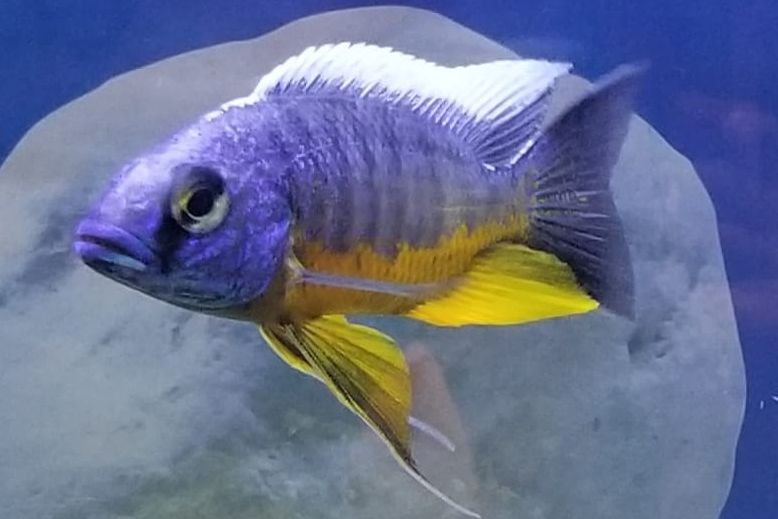
In the article on “Food and Malawi Bloat” on this website (link is below), there is an line of logic whereby this inefficient carbohydrate digestion by fish leads to bloat. It is a reasonable and quite possible line of logic supported by a well done study. We do feed our Malawi cichlids a high protein, high roughage food to avoid bloat. This is exactly the opposite of what is parroted in social media but it works well for us. To examine this further go to this link
Note that the percentage of carbohydrates is typically not listed on fish food. To get the percentage of carbohydrates one has to add up all the other percentages and subtract that sum from 100.
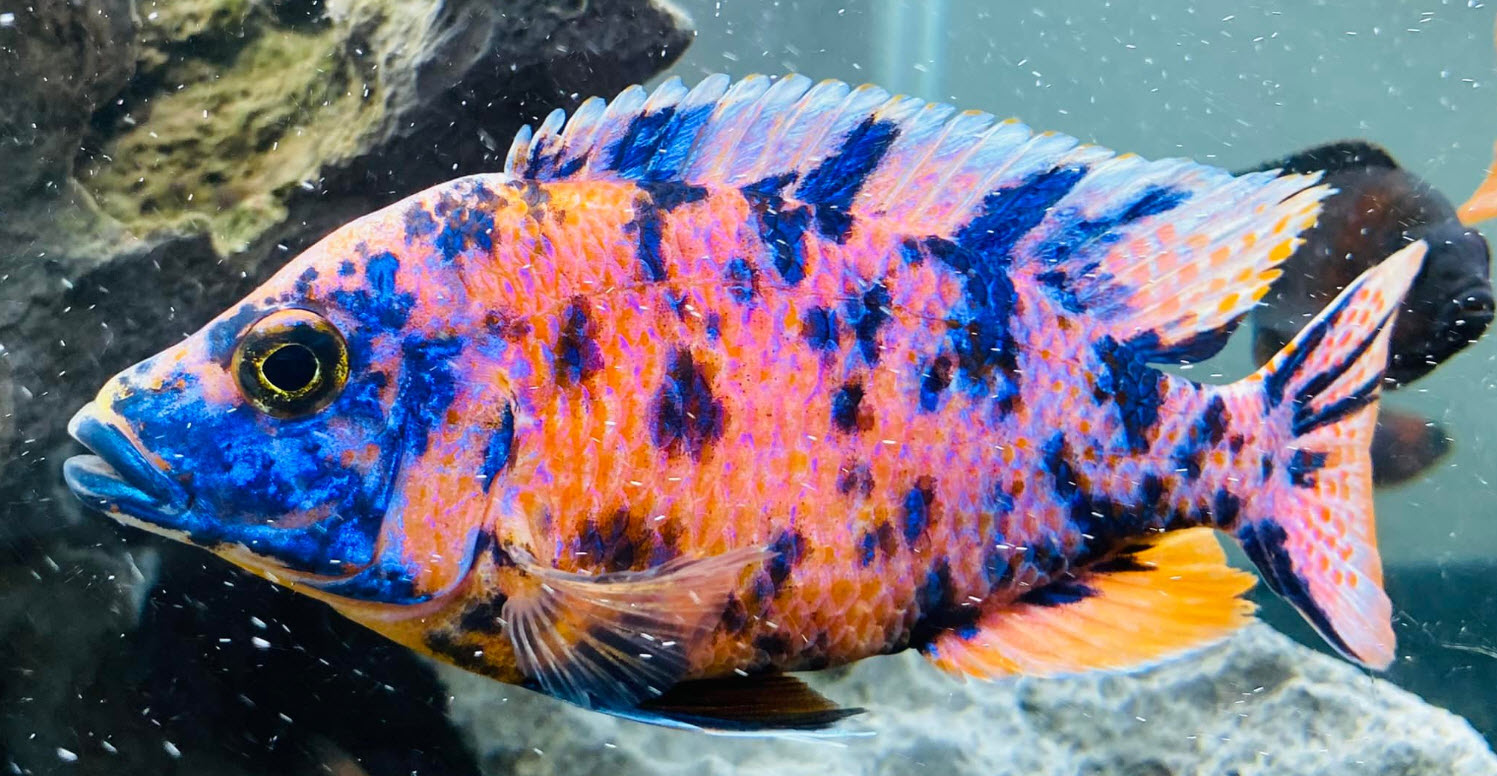
An Opinion on Carbohydrates
The author currently uses homemade gel food that is 55% protein by dry weight to feed roughly one thousand Malawi Cichlids. If this food runs out for some reason my “go-to” commercial dry food (Purina Aquamax 300) is 50% protein. And my fish are healthy and never get Malawi bloat.
There are several reasons I use a high protein food:
- Many fish in my tanks are still growing and need the protein for muscle mass growth
- “High protein” translates into “low carbohydrates” in most foods:
- Fish do not digest carbohydrates well and a well done study supports the idea that high carbohydrates cause “Malawi bloat” because of this inability to digest carbohydrates.
- Low protein/high carbohydrates give a high “carbon to nitrogen ratio” in the aquarium. This in turn can give three to five times more “brown gunk” in the filter media and substrate. This fast buildup of brown gunk is very undesirable. The brown gunk that results is very poor in beneficial bacteria.
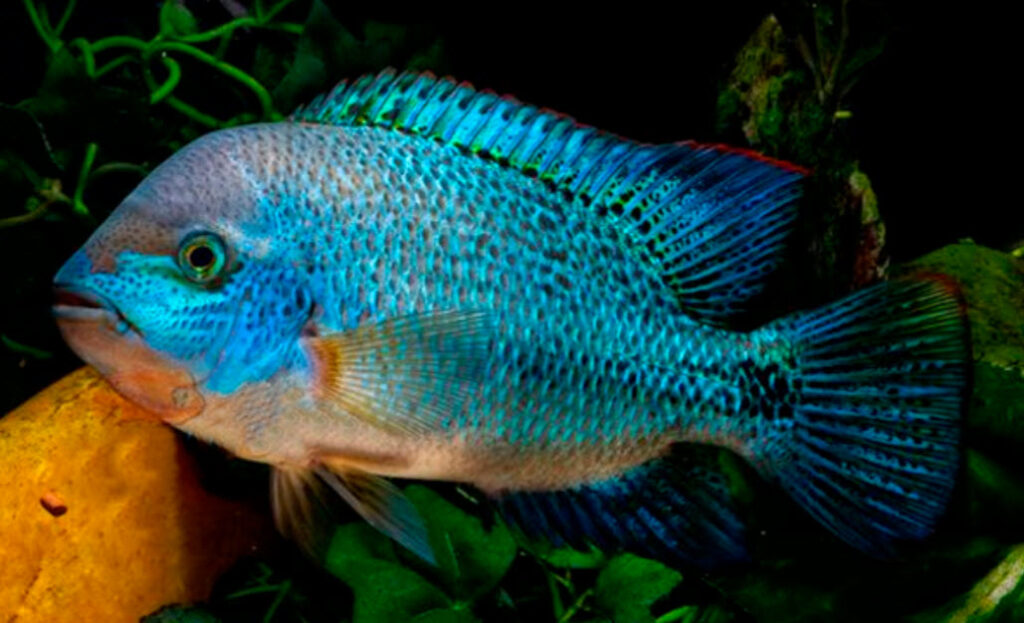
Food Fads
Fish food tends to follow along with human foods. The latest fad is “probiotic” foods. This fad has now extended to fish food with several makers offering “probiotic” fish food at very steep prices. These “probiotic” fish foods are claiming to cure every fish ill known.
It is instructive to look not at the claims for fish food but rather the claims for human food with the same fad. About every ten years or so there comes along a new “miracle food” for humans which very carefully makes it sound like it cures everything without actually saying it cures anything. Remember when fish oil was the miracle supplement? Or garlic? Well, the latest is “probiotic food”. It is instructive to look at what one paper claims for a “probiotic” bacteria BB536 in humans:
Key clinical findings point out that BB536 could act as a microbiome modulator to orchestrate the physiological activities of gut communities. Specifically, BB536 modulates luminal metabolism, stabilizes gut microbiota, and ultimately drives a fine-tuned homeostatic balance within the host-microbiome interaction.
“Beneficial effects of Bifidobacterium longum subsp. longum BB536 on human health: Modulation of gut microbiome as the principal action,” BoonWong et. Al.:
All the red words in this claim are what are called “weasel words”. They are terms with very nebulous meanings.
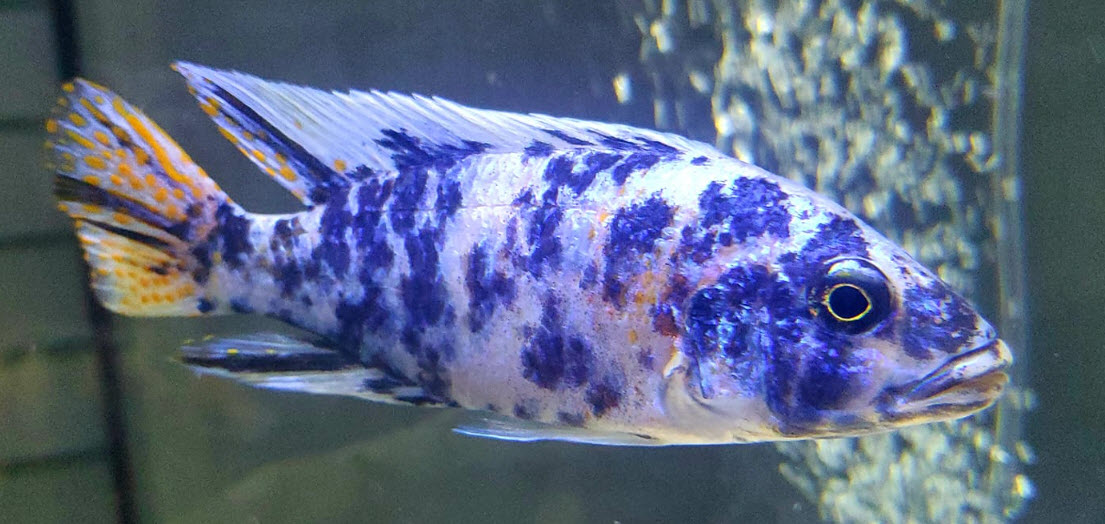
When it comes to claiming human medical benefits from anything, the U. S. Food and Drug Administration has some very strong regulations. If one does not have any data linking a well-defined improvement in any medical condition with treatment, there are certain words one cannot legally use to describe the product. These words include cure, treat, heal, remedy, alleviate, medicate, and fix. So everyone with no data to back up their claims uses “weasel words” like orchestrate, modulate, stabilize, drive, promote, encourage, harmonize, etc.
All these words have very nebulous meanings which can be interpreted many ways. So claims using these words are technically not “false claims”. They are simply meaningless claims. So whenever one sees a lot of “weasel words”, one knows the product is bogus.
Now unfortunately the FDA does not regulate fish food, so some probiotic fish foods claim to cure every fish disease in the world. But based on the fact that human probiotic foods NEVER claim to cure, treat, heal, alleviate, medicate, or fix anything and only use a ton of “weasel words”, one can safely deduct that probiotic fish foods cure NOTHING.
The other damning pieces of evidence is that there are no mentions of probiotic foods in the thirteen books above and no aquaculture operation uses probiotic foods. This is simply because probiotic foods is a fad and nothing more than a fad. There is NO scientific basis for it at all.
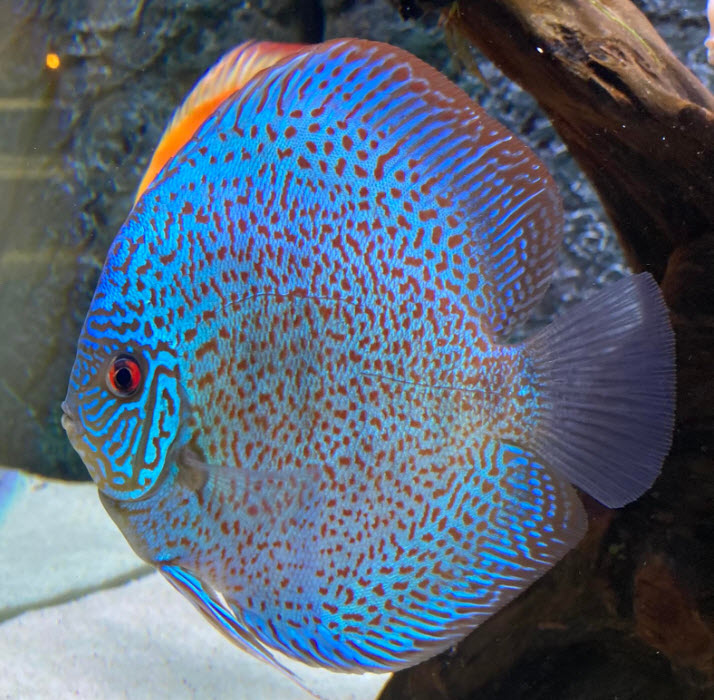
Indeed, if the claims of probiotic fish food were true, I would be very hesitant to feed those foods to my fish. Yogurt can be “probiotic” and filled with actual live bacteria because the bacteria are lactobacillus that create an acid environment in a product filled with the sugar called “lactose” (i.e. dairy products and ONLY dairy products). This acid environment kills off all the other types of bacteria and leaves only the harmless live lactobacillus.
If you take a food like fish food which doesn’t have a lot of lactose in it and create an environment where bacteria can grow, the result will be a mixed culture of all sorts of bacteria. Many of these species of bacteria will be producing bacterial toxins. So any fish food that claims to be probiotic is in truth claiming to harbor a lot of very bad bacteria which will poison one’s fish. So the claim is just false marketing hype. Remember, when it comes to fish products, suppliers can lie with impunity. There is no “truth in advertising” laws covering it.
Now it is true that it is possible to use special freeze drying processes to create dry dormant cultures of many bacteria which could then be powdered into the dry food. But that process is VERY expensive and would not be economical for fish food.
Garlic in Food
Also note garlic is NOT a good additive too fish food. The sulfurous compounds in garlic are there to make the garlic LESS palatable to animals. No aquaculture operation adds garlic to get the fish to eat more. So it just doesn’t work. It is the common practice of anthropomorphism, making animals human.
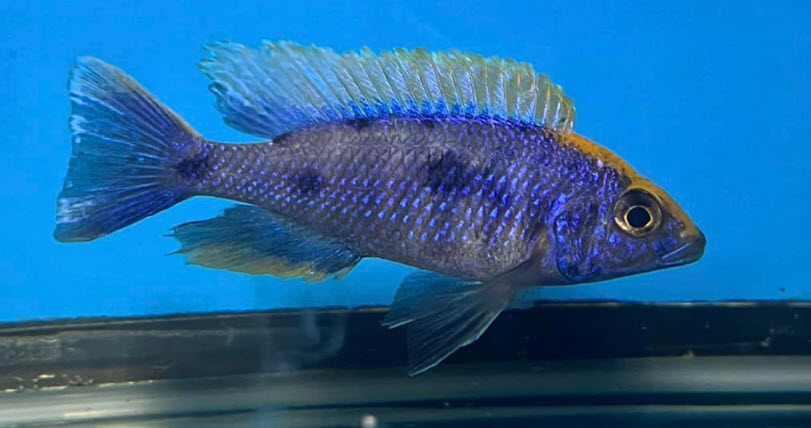
Belief Perseverance Effect
Now having said that many people (actually it is more like ALL people!) have some very strong and unmovable opinions on food. The millions of people who are buying probiotic food for themselves on a regular basis will read this analysis and dismiss it for this or that “reason”. Even when presented with large numbers of studies showing they are wrong they will rationalize and rationalize some more, rejecting the evidence. This is called “belief perseverance effect” and is something that can’t be fought with science and logic. We won’t try.
“Nothing dies harder than a lie that people want to believe”
Calvin


